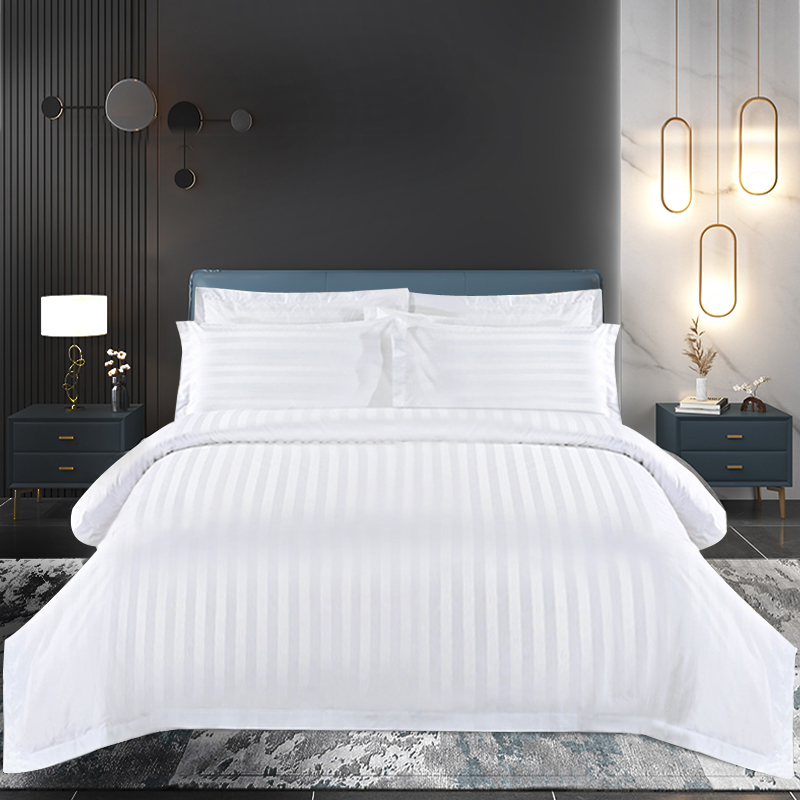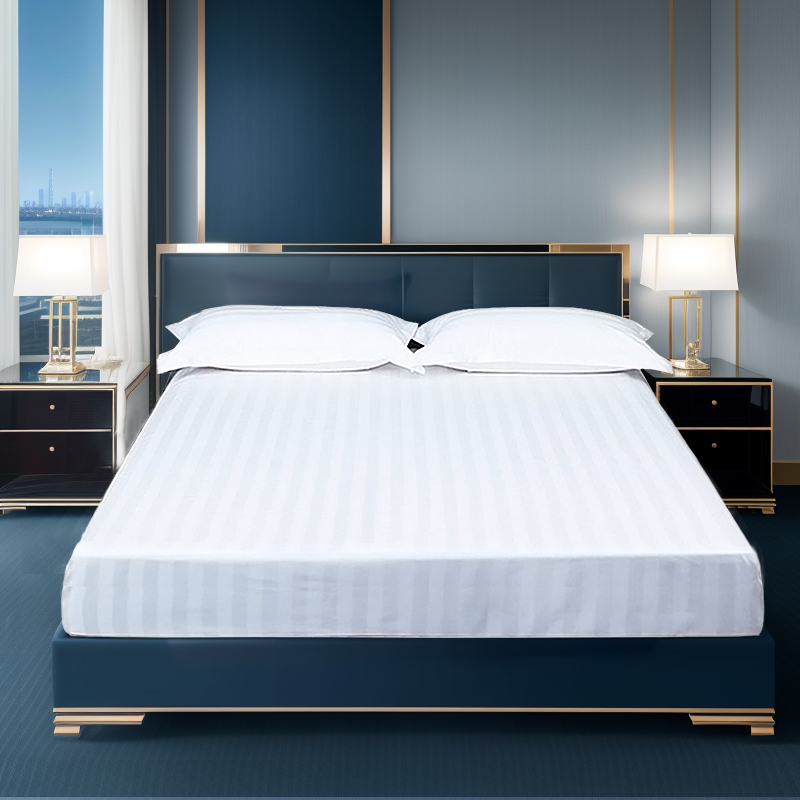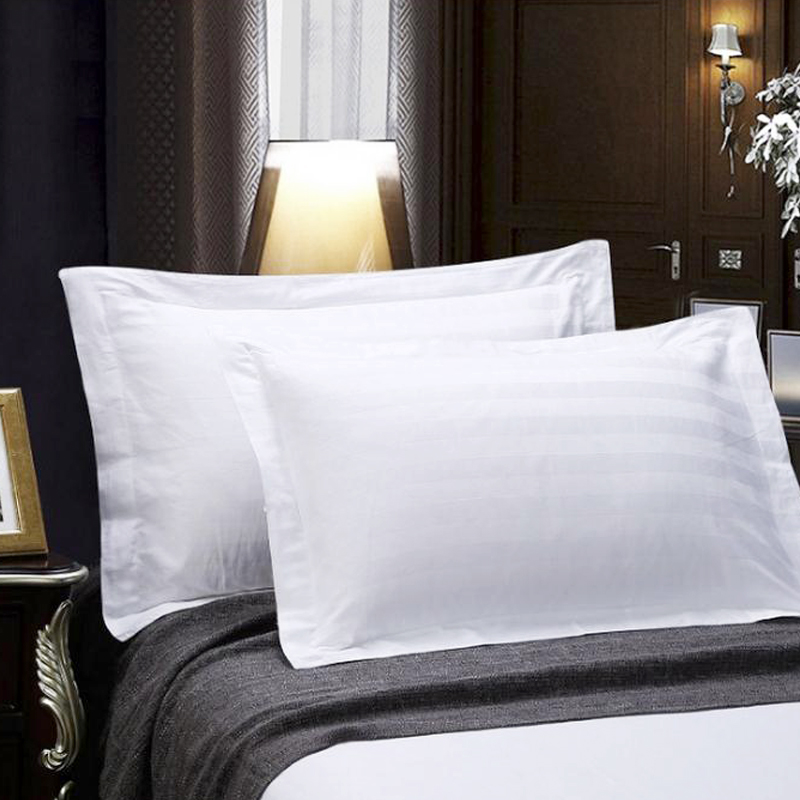How to Balance High Loft and Resilience in Hotel-Grade Velvet Quilt Cores?
Release Time : 2025-09-23
In the luxury hotel and boutique accommodation industry, a high-quality velvet quilt core is a key element in creating a warm and comfortable sleeping environment. Loft, a core indicator of down quality, directly affects the quilt's lightness and warmth. High loft means the down can trap more air, creating an effective insulating layer for warmth without feeling heavy. However, in actual hotel and accommodation operations, quilt cores are frequently folded, transported, and stored, subjected to prolonged compression, which severely tests their resilience. Maintaining high loft while ensuring quick recovery after repeated compression is crucial for product durability and user experience.
Achieving this balance first relies on selecting high-quality down. Premium down typically comes from the breast and abdomen of mature waterfowl, with intact, dense, and elastic clusters. This natural three-dimensional structure, like tiny springs, compresses under pressure and quickly recovers its shape. Larger, more intact clusters offer better resilience. Therefore, using mature, clean, and minimally processed high-quality down is fundamental. Down cleanliness is also critical; residual oil or impurities can clump the fibers, hindering their expansion and reducing loft.
In terms of processing, proper filling and stitching techniques are crucial for maintaining loft and resilience. The fabric should be breathable and flexible, allowing the down to expand freely without being restricted. High-density weaving with down-proof treatment effectively prevents down leakage while maintaining comfort. Stitching methods often employ a compartmentalized design, dividing the down into separate chambers to prevent it from shifting to the edges under gravity or pressure. This structure not only enhances the uniformity of warmth, but also allows each section of down to recover independently after compression, reducing inter-fiber entanglement.
The overall design of the quilt core must also consider both usage and storage needs. While excessive filling may increase immediate warmth, it also makes compression more difficult and hinders complete recovery after prolonged compression. Therefore, a well-designed filling amount and distribution can meet winter warmth requirements while maintaining sufficient elasticity. Furthermore, the quilt core's outer packaging should avoid vacuum-sealed bags for long-term storage, especially in humid or high-temperature environments like hotel laundries, as prolonged compression can cause down fiber fatigue and impair its natural resilience. Loose, breathable storage methods are recommended to allow the down to "breathe" and recover during non-use periods.
Proper maintenance is also crucial. Frequent washing in hotels and guesthouses poses a significant challenge to the down structure. Professional washing processes must control water temperature, detergent type, and spin-drying intensity, avoiding high-temperature drying or vigorous agitation that can damage the down clusters. Thorough drying and gentle fluffing after washing helps the down regain its original loft and elasticity.
Ultimately, achieving a balance between high loft and resilience is not merely a result of materials and processes, but also a deep understanding of the product's entire lifecycle. Only through the synergistic optimization of raw materials, structure, processing, and maintenance can a velvet quilt core consistently provide guests with a light, warm, and cloud-like sleeping experience, even after countless compressions and expansions.
Achieving this balance first relies on selecting high-quality down. Premium down typically comes from the breast and abdomen of mature waterfowl, with intact, dense, and elastic clusters. This natural three-dimensional structure, like tiny springs, compresses under pressure and quickly recovers its shape. Larger, more intact clusters offer better resilience. Therefore, using mature, clean, and minimally processed high-quality down is fundamental. Down cleanliness is also critical; residual oil or impurities can clump the fibers, hindering their expansion and reducing loft.
In terms of processing, proper filling and stitching techniques are crucial for maintaining loft and resilience. The fabric should be breathable and flexible, allowing the down to expand freely without being restricted. High-density weaving with down-proof treatment effectively prevents down leakage while maintaining comfort. Stitching methods often employ a compartmentalized design, dividing the down into separate chambers to prevent it from shifting to the edges under gravity or pressure. This structure not only enhances the uniformity of warmth, but also allows each section of down to recover independently after compression, reducing inter-fiber entanglement.
The overall design of the quilt core must also consider both usage and storage needs. While excessive filling may increase immediate warmth, it also makes compression more difficult and hinders complete recovery after prolonged compression. Therefore, a well-designed filling amount and distribution can meet winter warmth requirements while maintaining sufficient elasticity. Furthermore, the quilt core's outer packaging should avoid vacuum-sealed bags for long-term storage, especially in humid or high-temperature environments like hotel laundries, as prolonged compression can cause down fiber fatigue and impair its natural resilience. Loose, breathable storage methods are recommended to allow the down to "breathe" and recover during non-use periods.
Proper maintenance is also crucial. Frequent washing in hotels and guesthouses poses a significant challenge to the down structure. Professional washing processes must control water temperature, detergent type, and spin-drying intensity, avoiding high-temperature drying or vigorous agitation that can damage the down clusters. Thorough drying and gentle fluffing after washing helps the down regain its original loft and elasticity.
Ultimately, achieving a balance between high loft and resilience is not merely a result of materials and processes, but also a deep understanding of the product's entire lifecycle. Only through the synergistic optimization of raw materials, structure, processing, and maintenance can a velvet quilt core consistently provide guests with a light, warm, and cloud-like sleeping experience, even after countless compressions and expansions.







